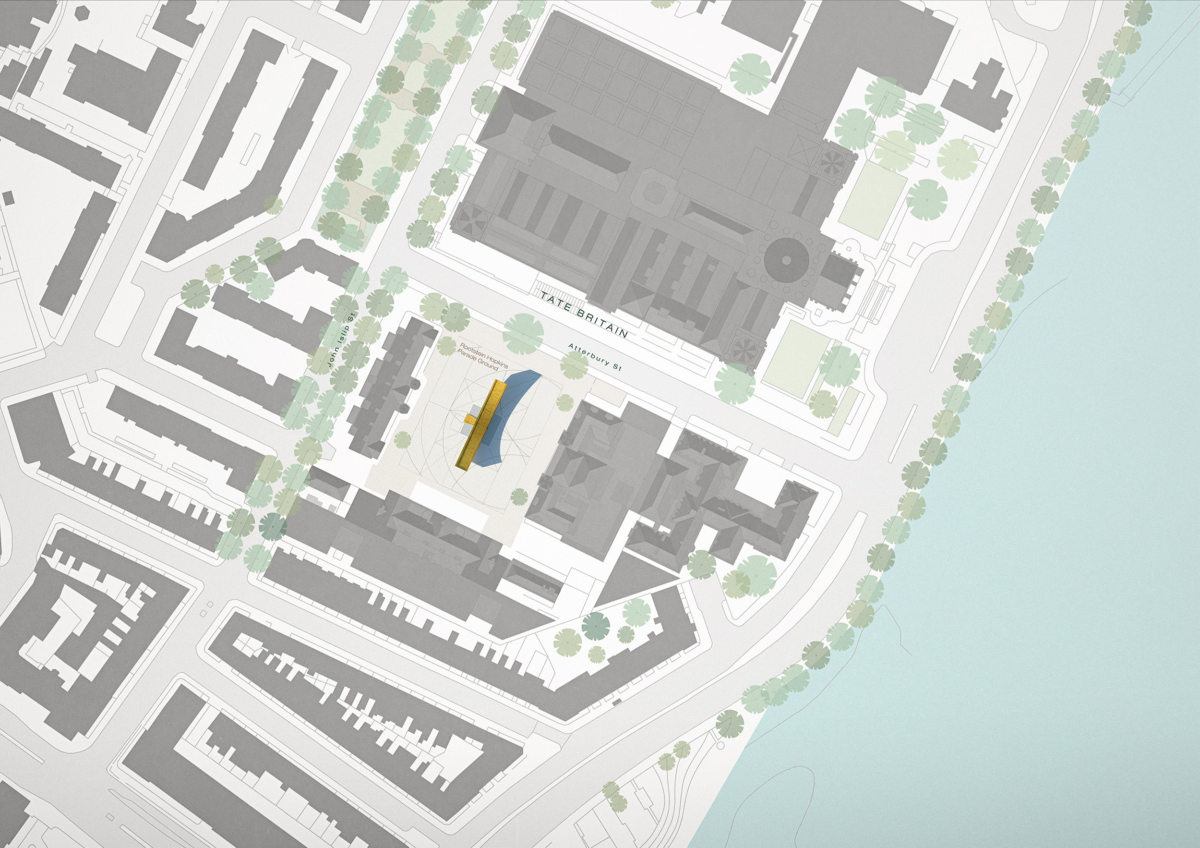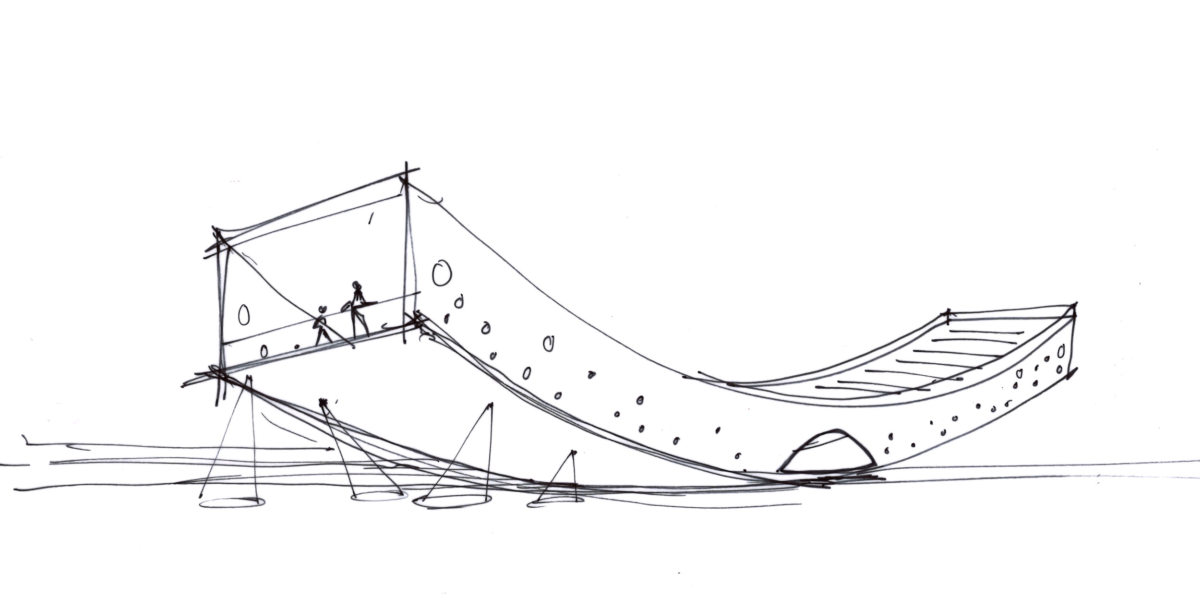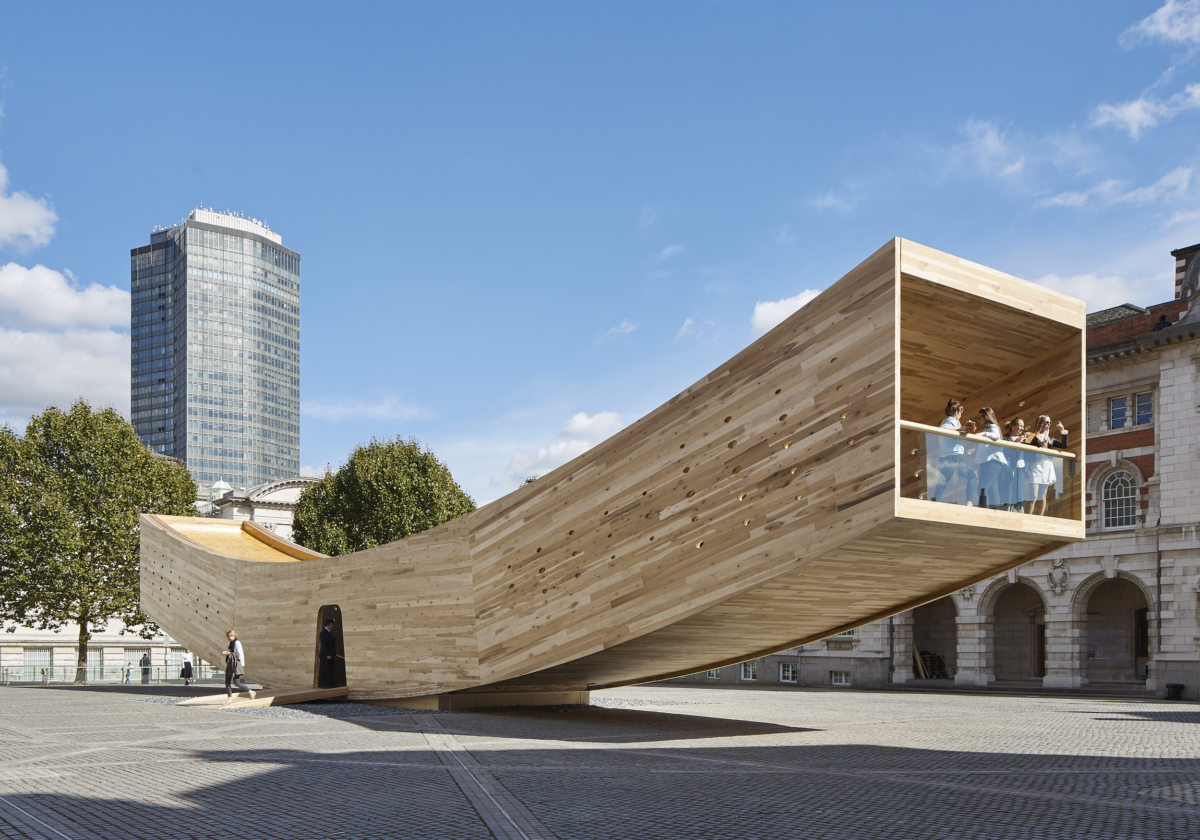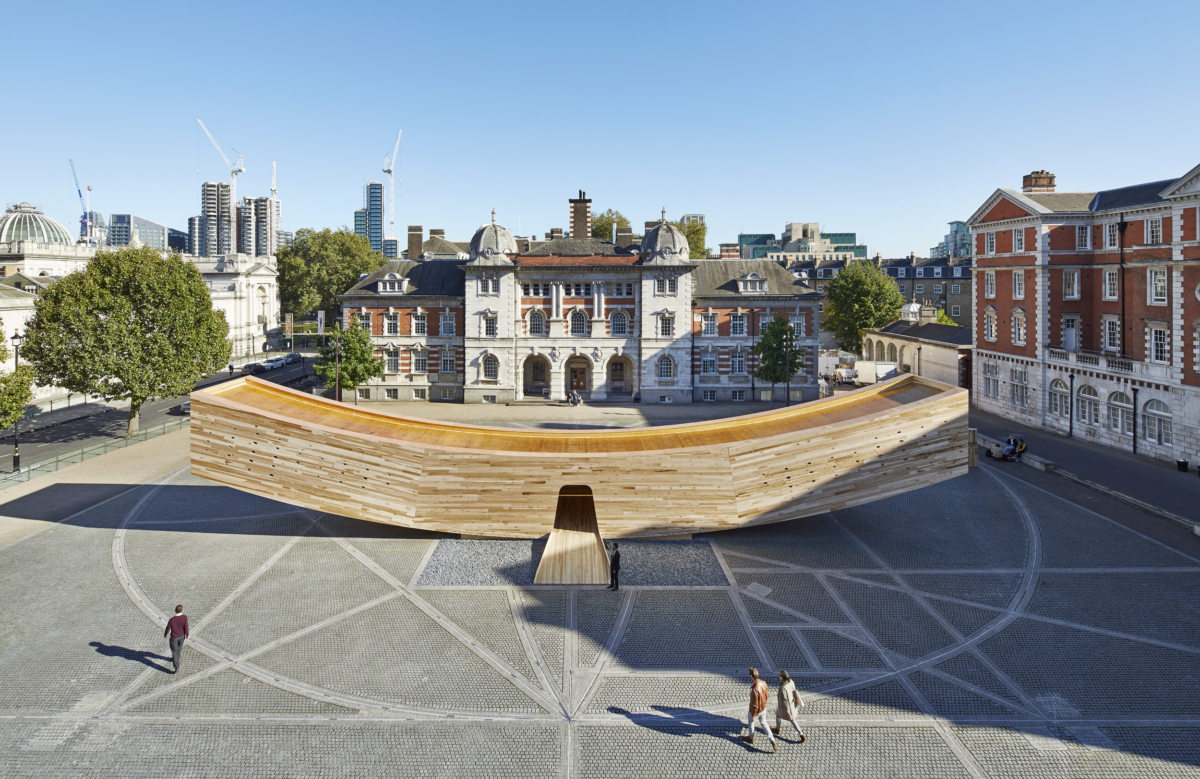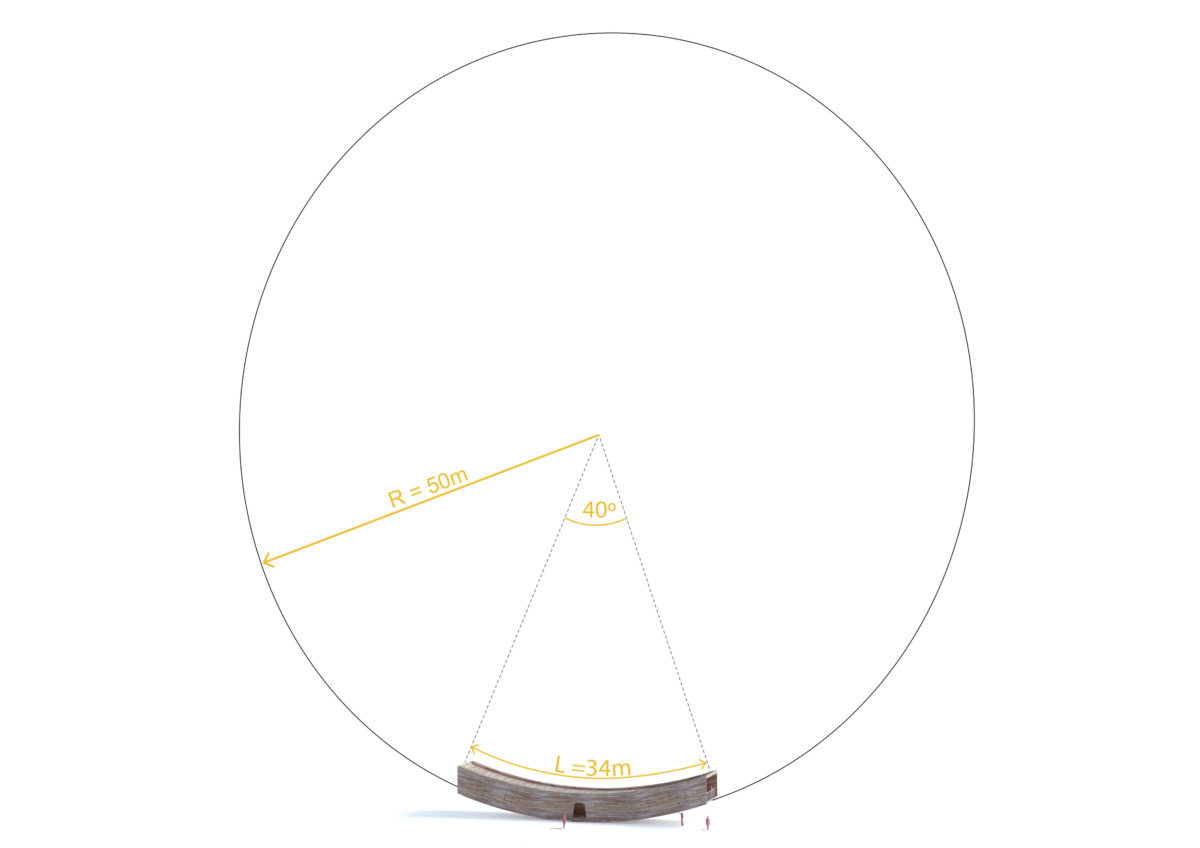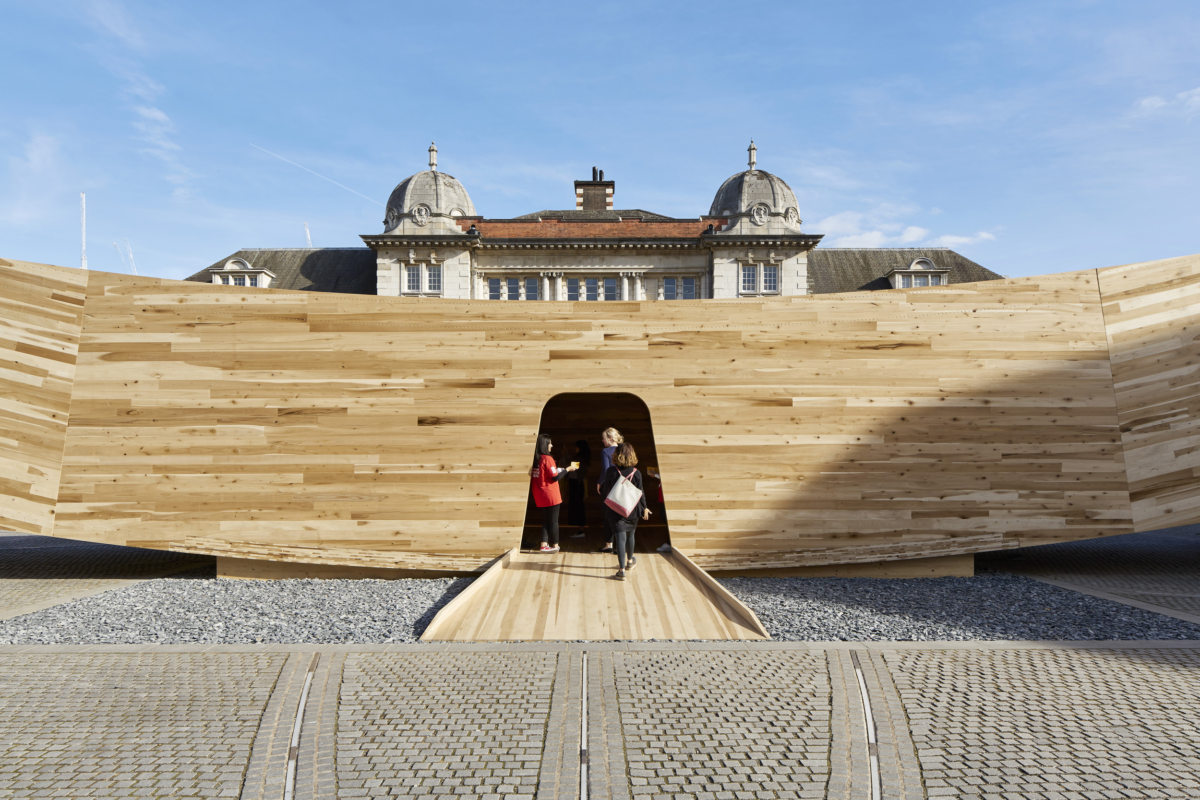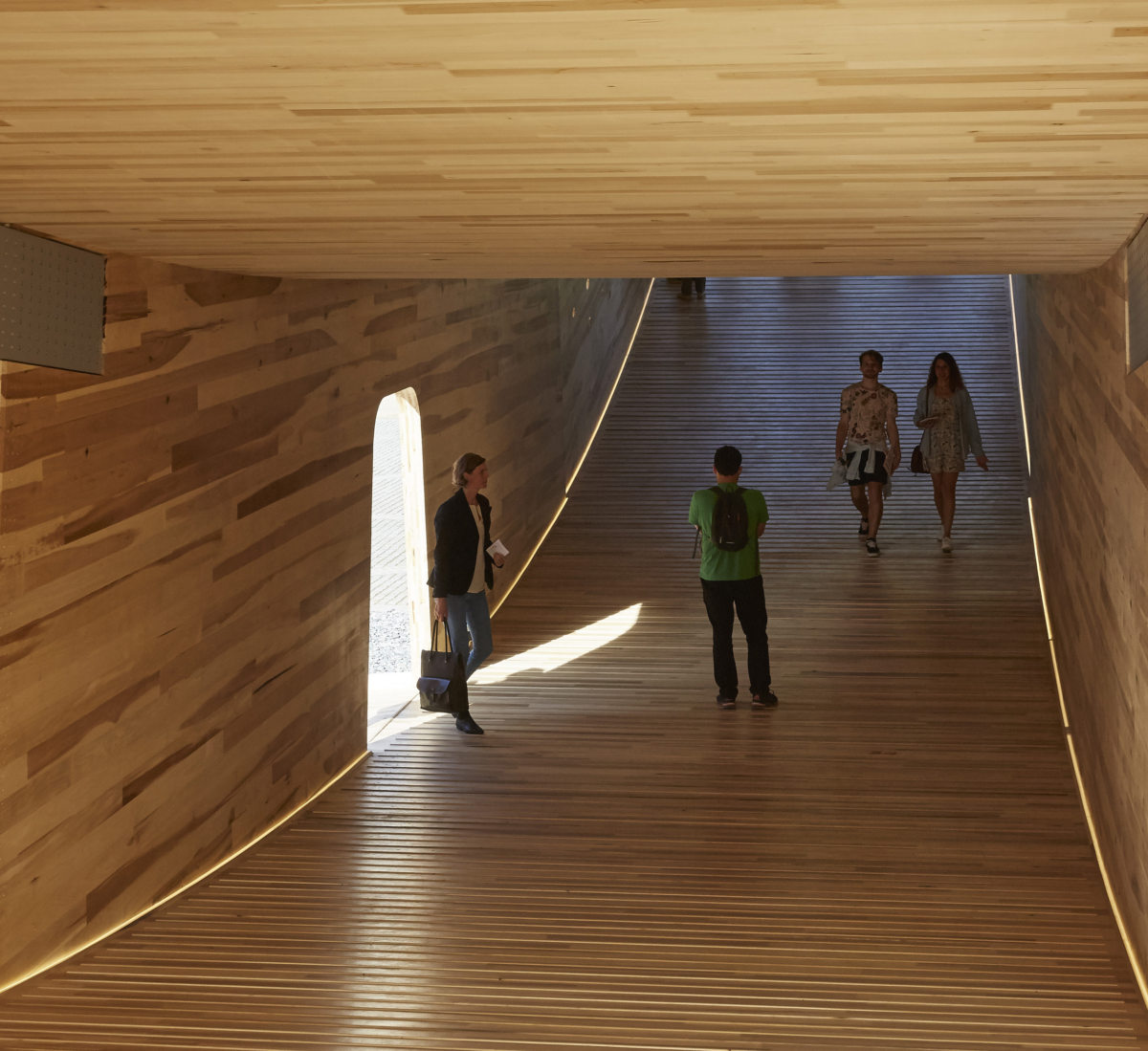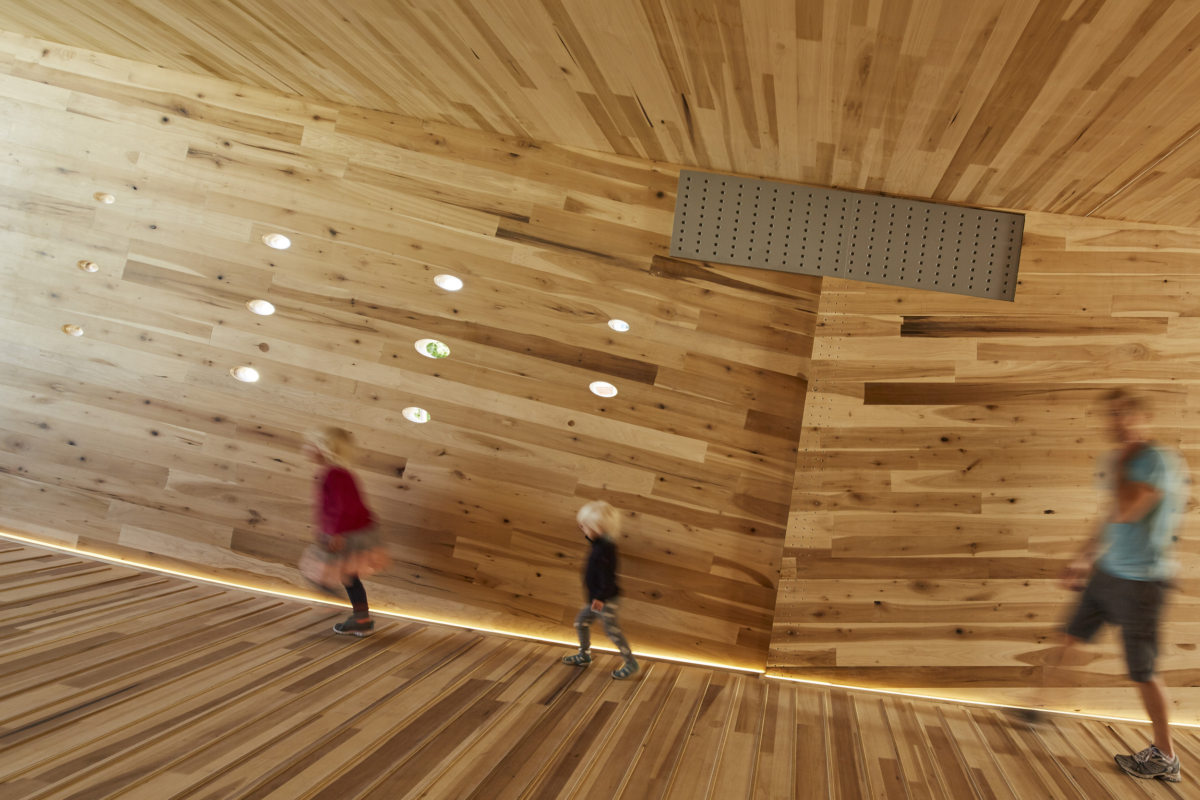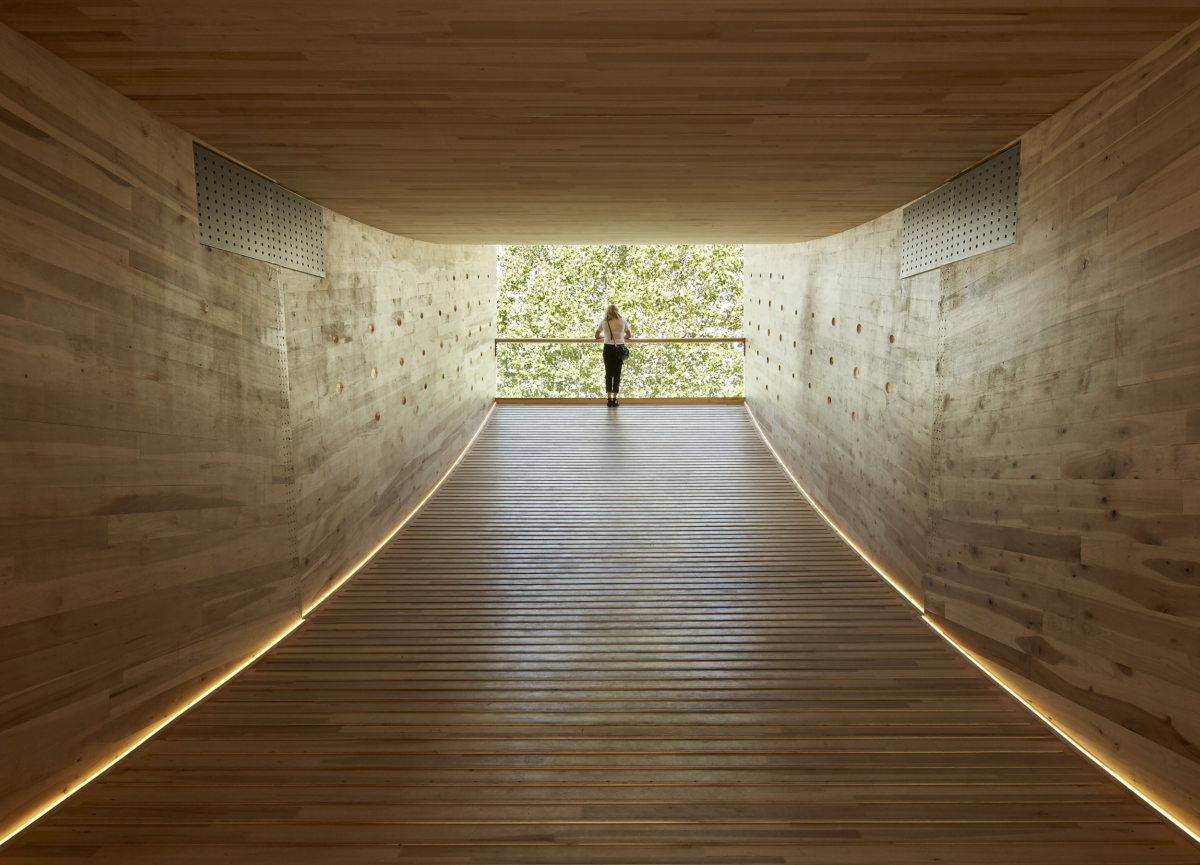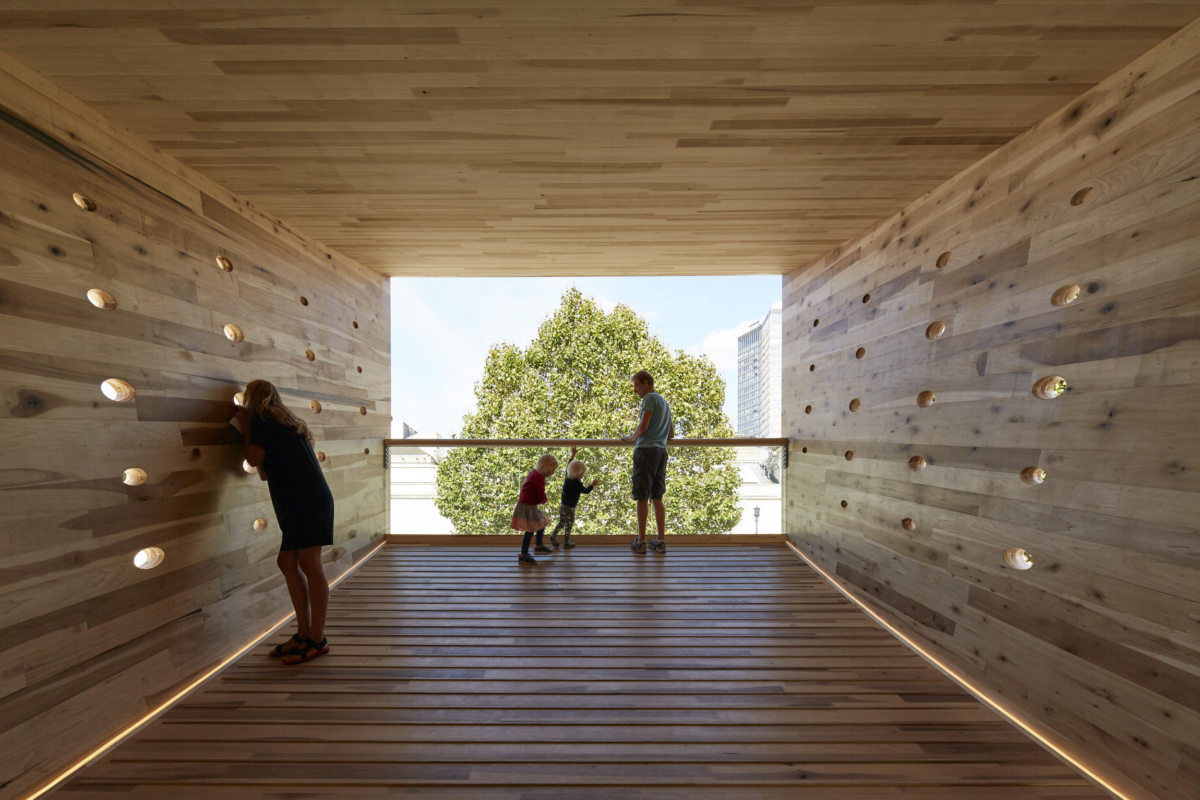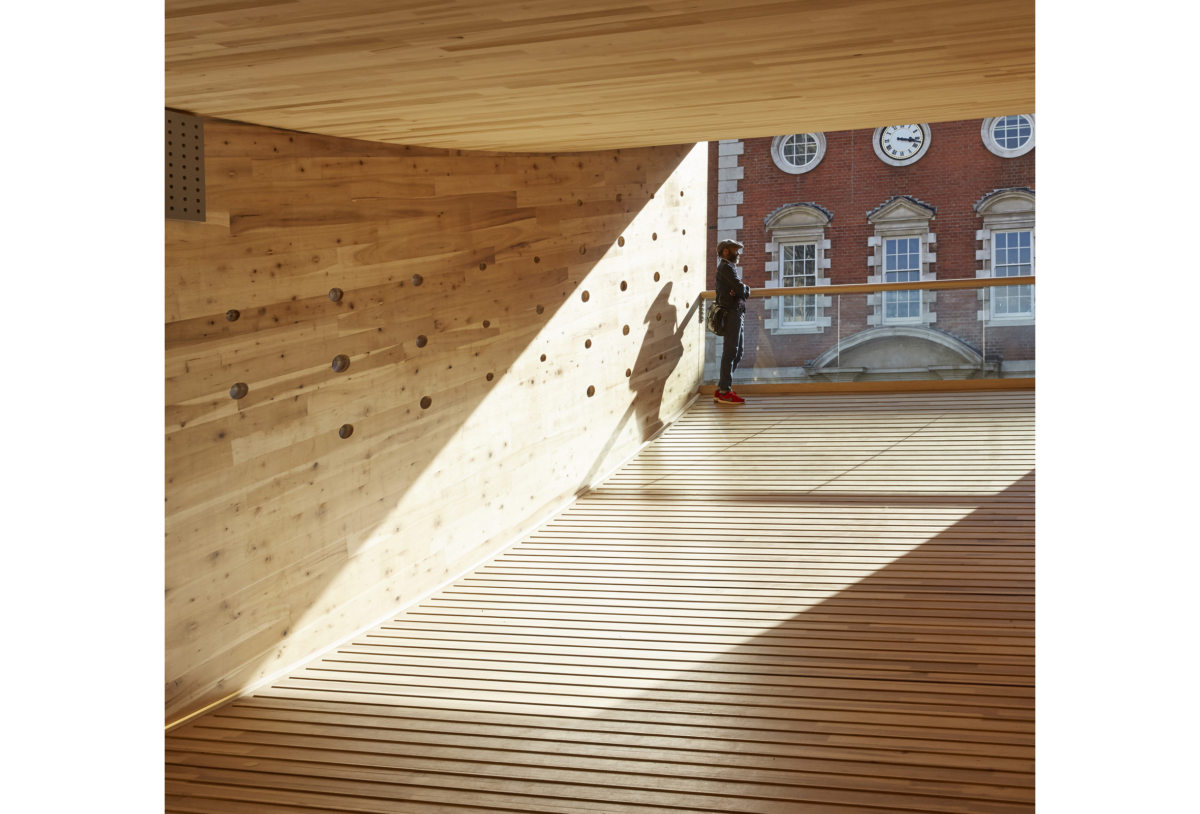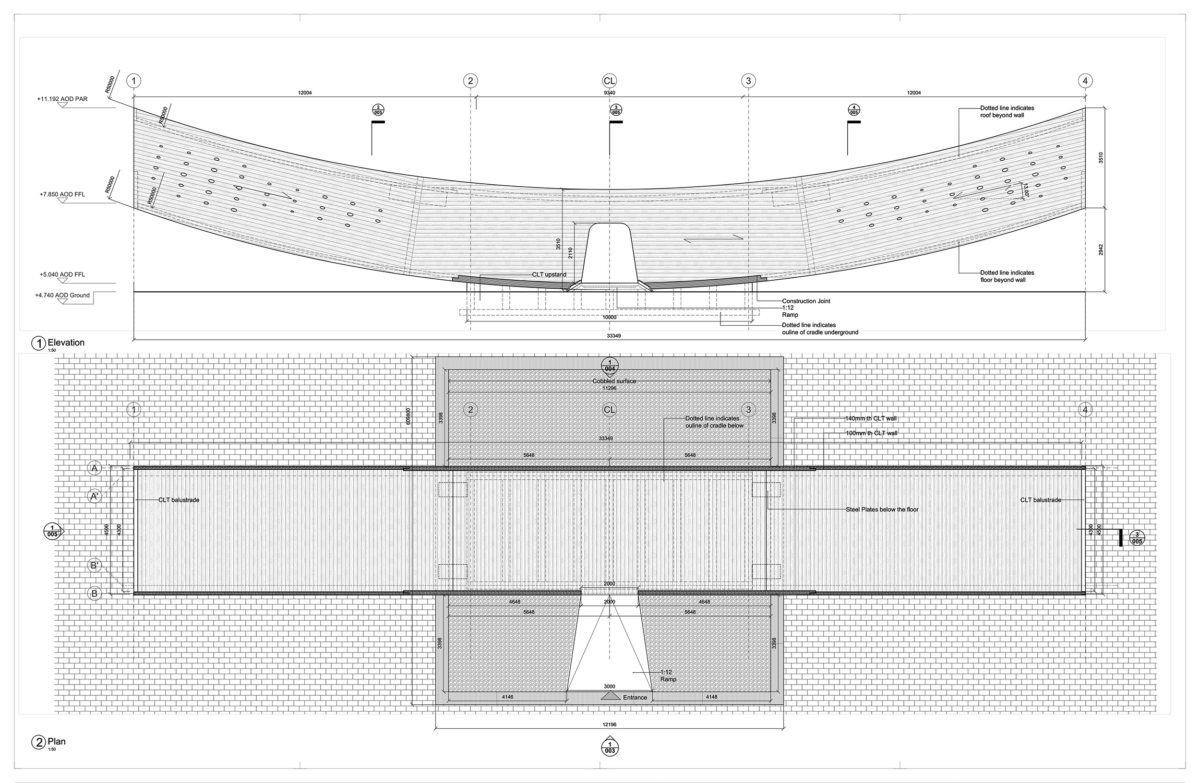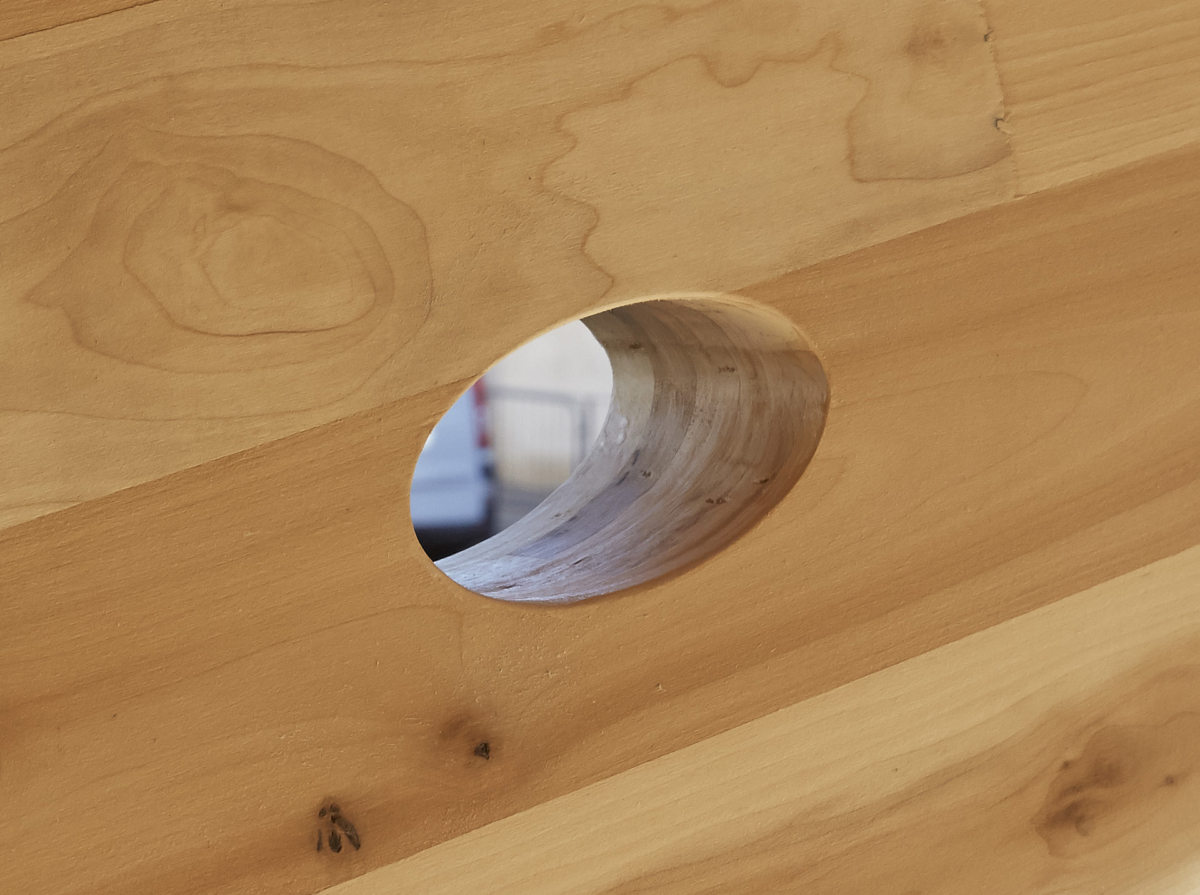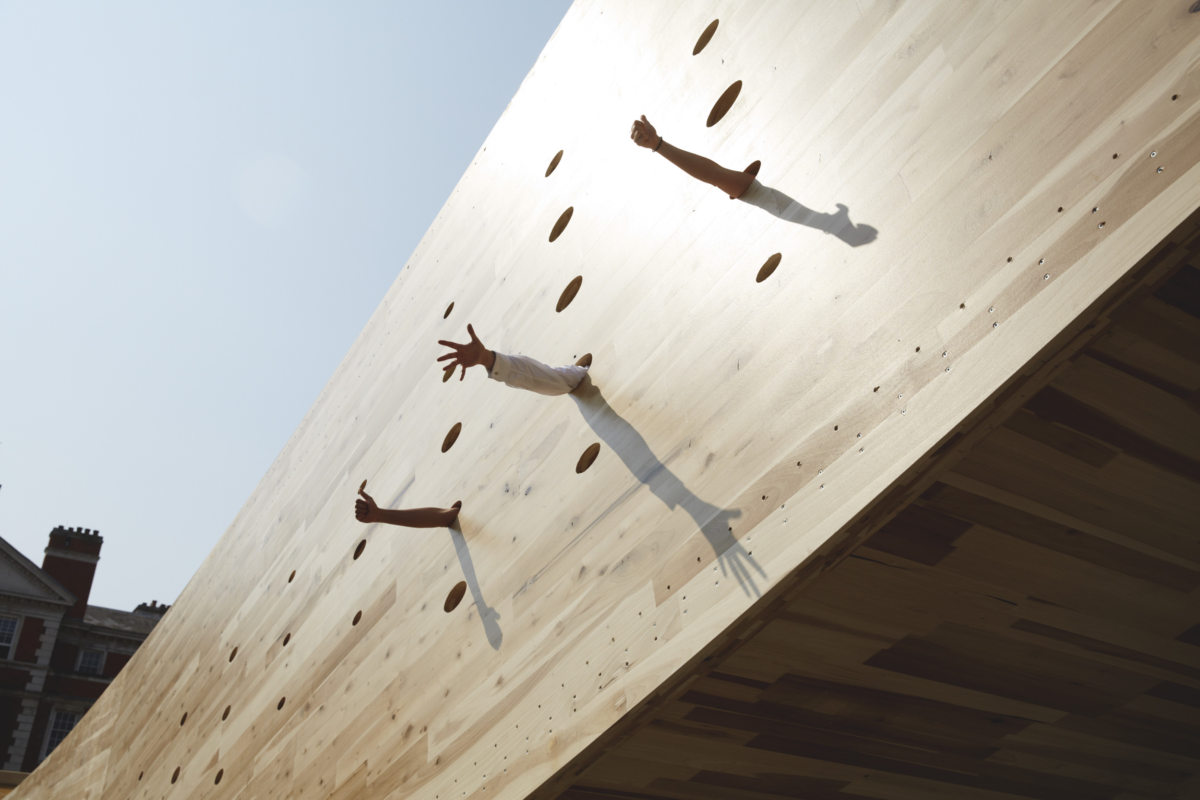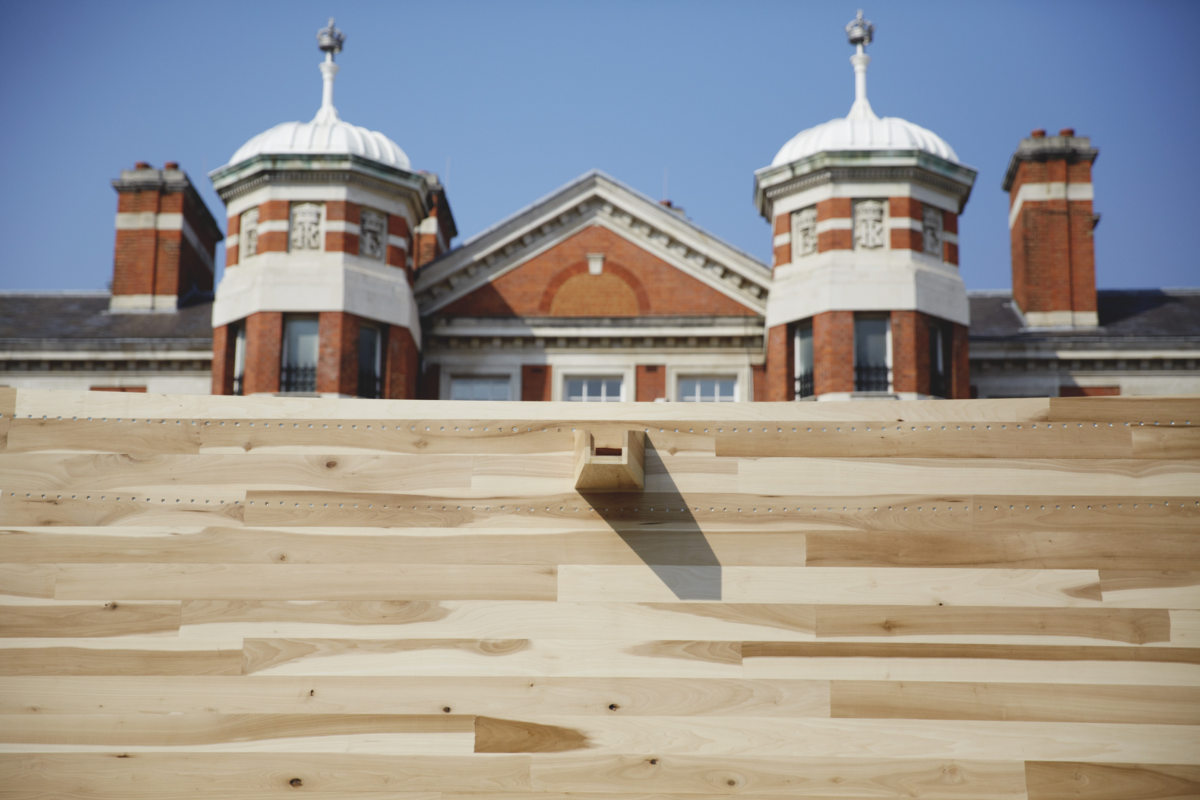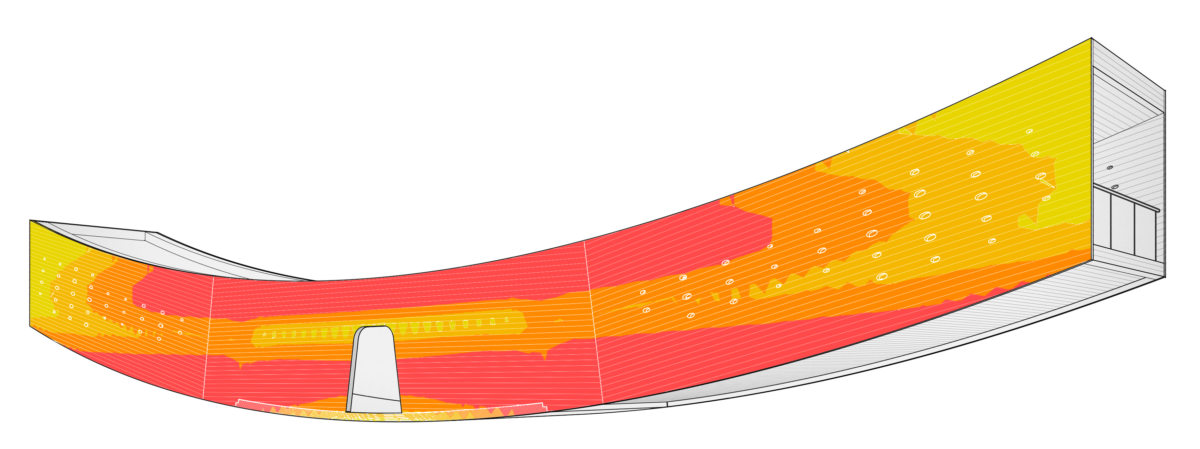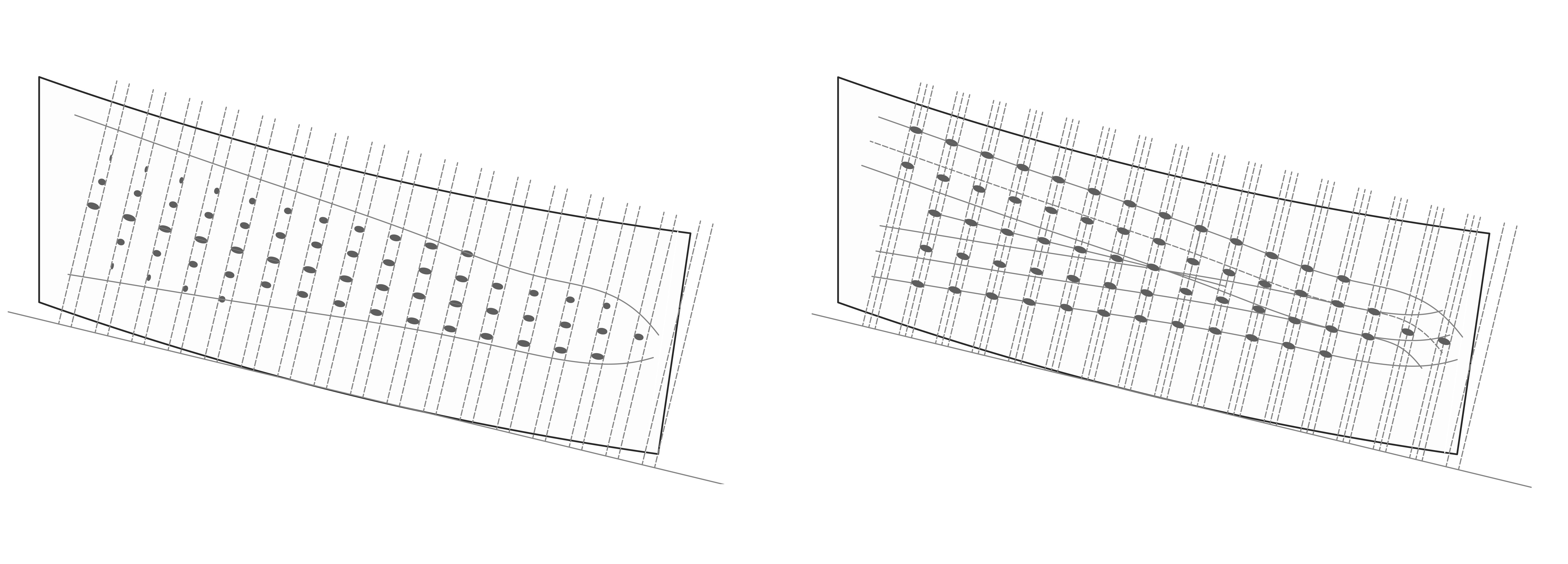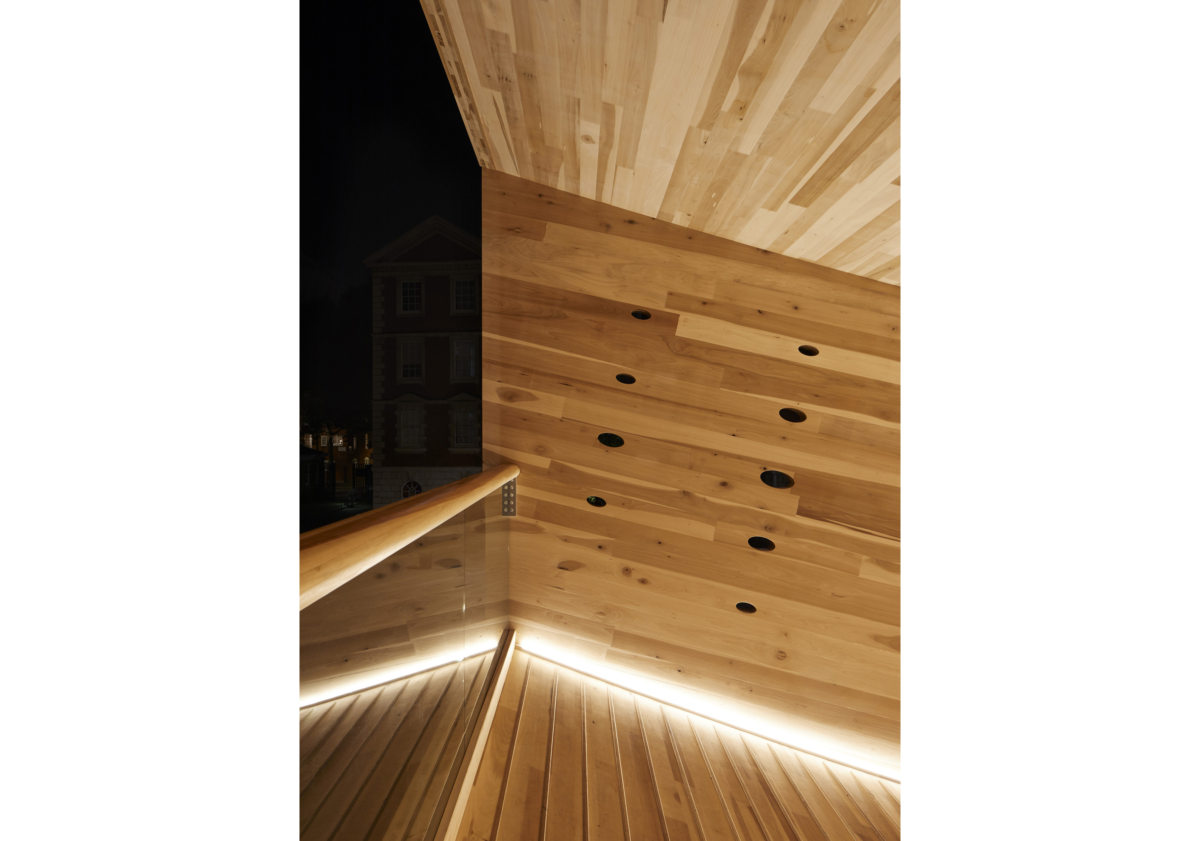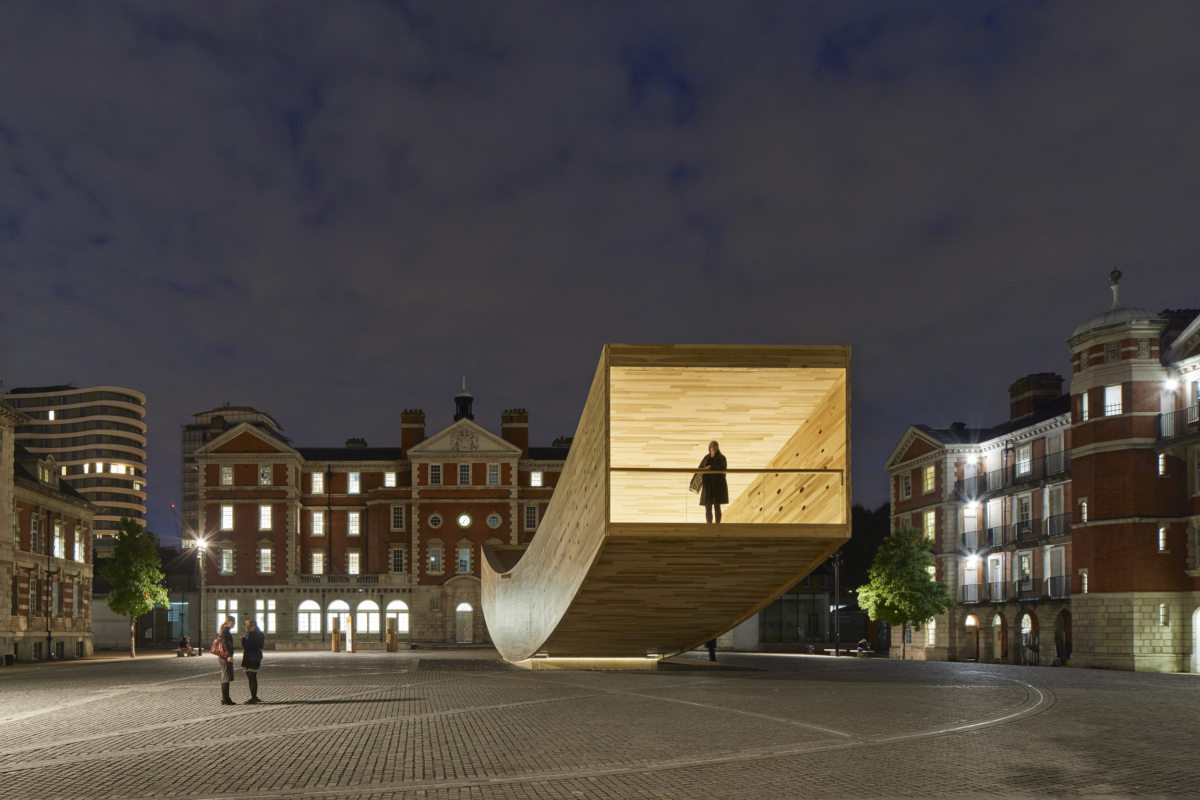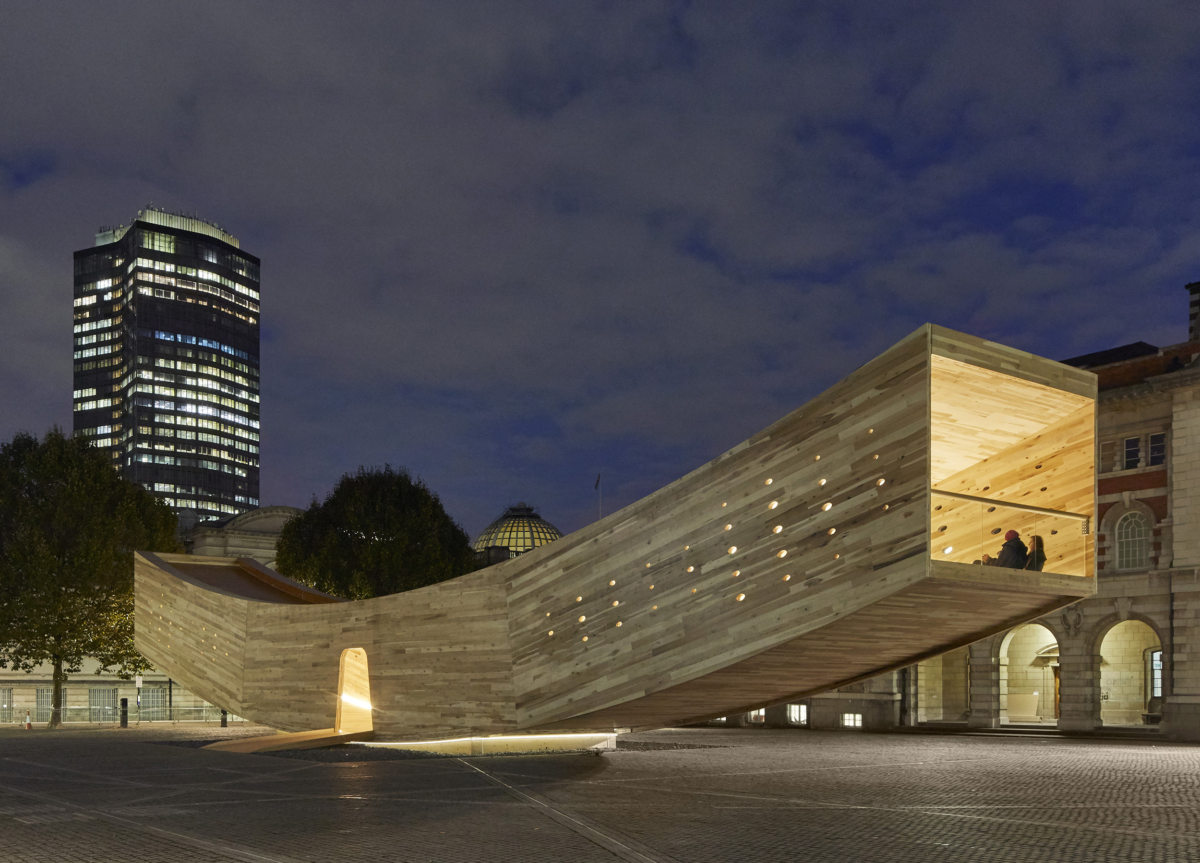The Smile London
The Smile is a public pavilion that formed the centrepiece of the 2016 London Design Festival. Located in the Chelsea College of Art (UAL) Parade Ground next to the Tate Britain, the Smile brought an immersive architectural experience to one of London’s most significant public spaces. Conceived as a great arc, balancing on the urban horizon, the Smile invited the public at large to engage with architecture in an unexpected and invigorating way. At the same time, it enabled a wide audience to learn about contemporary wood structures. The essence of the idea was to challenge the public’s expectation of architecture as something fixed, immobile and serious with an inhabitable form whose curved silhouette suggests movement, rocking and a an accessible, witty personality. Fabricated from cross- laminated American tulipwood, the Smile created an immersive sensory environment integrating structure, geometry, space and light.
The Smile‘s geometry is a segment of a 50m radius circle, forming a 34m long arc. This arc is supported from the tangent point where the circle meets the earth. Two cantilevers spring 14m from the centre and are open at both ends to funnel light to the interior, and to offer visitors focussed views: to the east, a huge London plane tree, and to the west, neighbouring ornate Edwardian buildings of UAL. Entering through a single opening where the curved form touches the ground, the visitor could walk (or run) from end to end of the 34-metre-long dynamically curved space in a haptic journey that engaged all the senses.
The concept emerged from the requirement to create a landmark public installation using only 70 cubic metres of tulipwood. This waste material was sourced from FSC hardwood forests from mixed deciduous forests of the Eastern USA, supplied by the American Hardwood Export Council. To optimise the structural and spatial capacity of the tulipwood we focussed on using CLT planks. Flat planks gain strength and stiffness when assembled as a 3-dimensional box section or tube. Therefore the pavilion form was developed as an inhabitable tube. To further emphasize the strength of the CLT, we created a gravity-defying upside-down arc. The Smile’s two 12-meter-long cantilevers are the longest ever achieved with CLT, enabled by the very high strength to weight ratio of Tulipwood.
We made our design highly efficient by forming it from only 12 CLT panels at their maximum size, 14m long and 4.5m wide. The central panels were 140mm thick and the end panels 100mm thick. Elliptical perforations in the walls expressed the structural forces at work — concentrating the openings where there is reduced stress on the structure and dispersing where the CLT is working harder. The perforations created a form of structural ornament, enabling light to track across the Smile’s interior surfaces during the day. At night, illuminated from within, the Smile became a giant urban lantern.
The Smile was also a fear of timber engineering. Arup applied their latest timber design research to devise a structural connection system to connect the Smile’s wall, floor and roof panels of 4000 screws approx. 400mm long. These were installed with an ordinary rechargeable screwdriver. At the tube’s mid-span four 1m long steel plates connected the main structural panels at high level, also using screws at highly specific angles to engage with the direction of laminae and strands within the CLT. Due to archaeological remains below the site, no foundations were possible – the structure had to be self-supporting. The solution was to connect the structure to a central 1m deep glulam timber cradle filled with 20 tonnes of steel counterweights. This allowed the pavilion to take a live structural load of 60 people at either end of the arc, at any time.
For the American Hardwood Export Council, The Smile was one of the most important developments in a decade of research into structural timber innovation with structural engineers, Arup. For Alison Brooks Architects the installation was an opportunity to free architecture from the conventions of permanent buildings, to celebrate the sensory qualities of wood, and to stretch a fully renewable, zero-carbon structural material to its limit.
